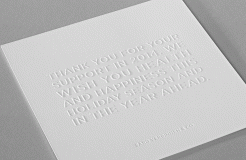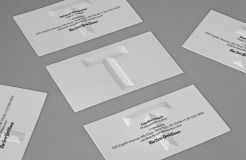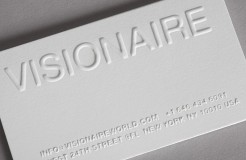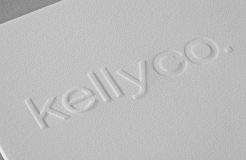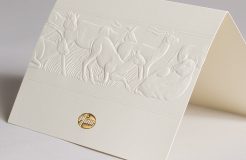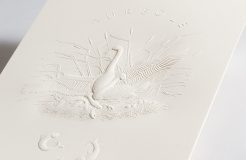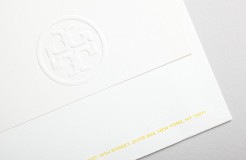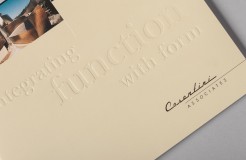Embossing | NYC
By altering the surface of paper, embossing produces a raised, three-dimensional image. This is achieved by pressing a sheet of paper between two dies: one that is raised and one that is recessed.
When paper is placed between the dies, it is forced into the recessed die creating an embossed impression. A combination of heat and pressure is applied to the dies in order to squeeze the fibers of the paper, which results in a permanently raised area in the paper.
Depth: The depth of the image may be consistent throughout the design or it may vary, producing a sculptured effect – especially nice for large images with intricate designs printed on darker-colored papers.
A single level embossing die where all the elements of the design are etched on a single level is the simplest die to produce. This type of die might be used for a panel card, logos or include a ruled line. A multi-level die might include bevels, curves, intricate detail, or custom textures that enhance the design.
Debossing | NYC
“Debossing” is similar to embossing, but recesses the design rather than raising it. The process involves applying pressure to the front side of a substrate and forcing the material down from the surface. Although it is not as common as embossing, it is used to provide a different effect or appearance that fits a particular theme.
Good results require careful attention to the paper’s weight, texture, and color, as its formability, surface, and general durability affect the success of the process.
Interested in learning more about embossing or debossing? Call us to discuss your ideas so we can recommend an appropriate paper and die type.

